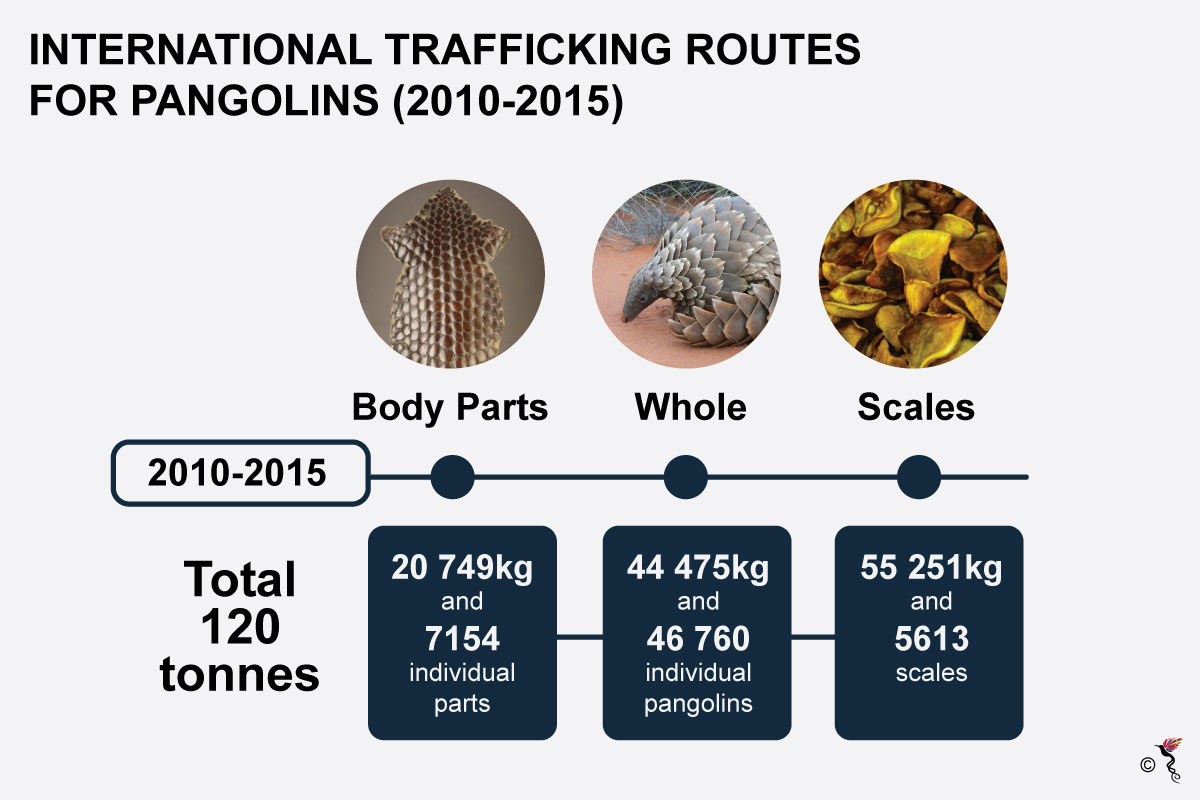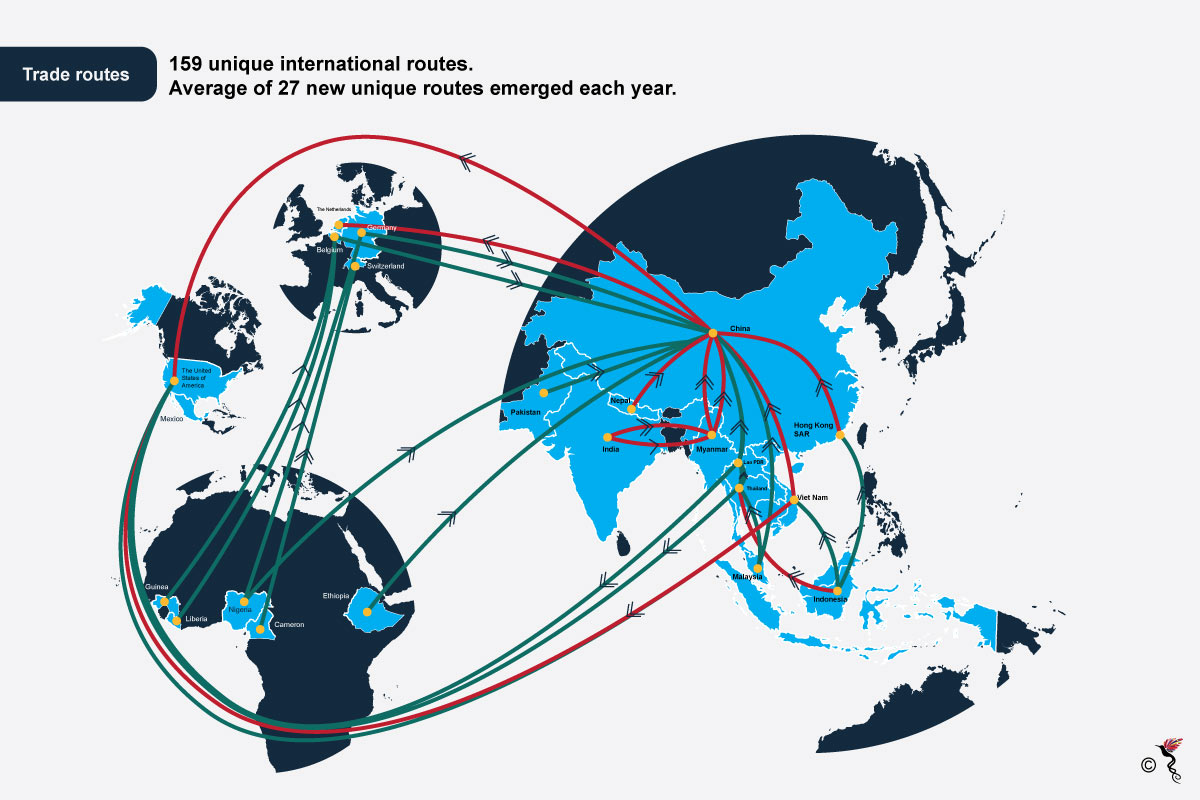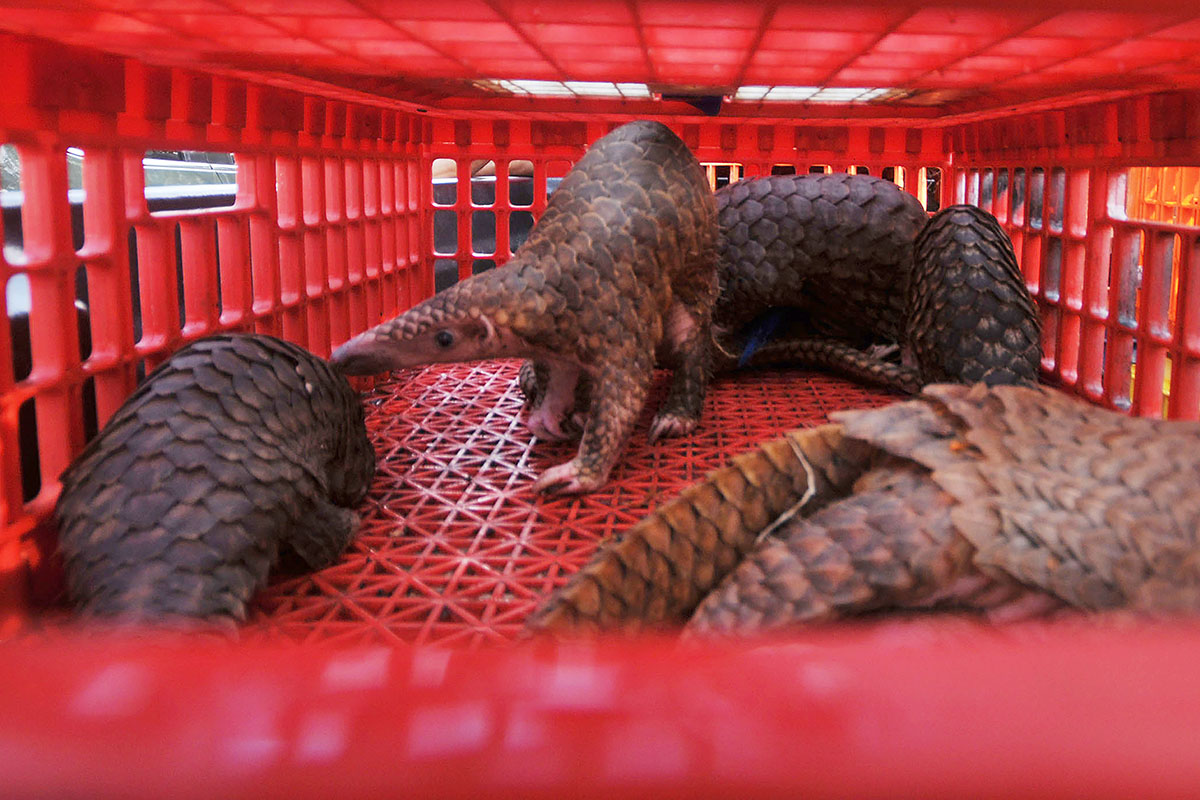Pangolins continue to be the most trafficked mammal in the world. According to new research released today by TRAFFIC, the wildlife trade monitoring network, and International Union for Conservation of Nature (IUCN), an average of 20 tonnes of pangolins and their parts have been trafficked internationally every year with smugglers using 27 new global trade routes annually.
The report was released in the wake of the world’s largest ever pangolin seizure, when China announced the seizure of 11.9 tonnes of scales from a ship in Shenzen last month.
The new comprehensive analysis of cross-border pangolin seizures has shown that a combined minimum of 120 tonnes of whole pangolins, parts and scales were confiscated by law enforcement agencies from 2010 to 2015 alone.
However, most international trafficking of pangolins (and their parts and derivatives) occurred within Asia, both in terms of number of incidents and quantity.
According to the “Global Trafficking of Pangolins: A Comprehensive Summary of Seizures and Trafficking Routes from 2010–2015” report, the top ten countries and territories involved in the most trafficking incidents, seven were in Asia, namely China, Viet Nam, Malaysia, Hong Kong SAR, Thailand, Lao PDR, and Indonesia. The remaining three were the US, Nigeria, and Germany.
One of the biggest discoveries made through the report is that there are 159 unique international trade routes that were used by pangolin traffickers during the six-year study period.
As a comparison, a previous analysis by the Convention on International Trade in Endangered Species of Wild Fauna and Flora (CITES) found 218 routes over a 38-year period ranging from 1977-2014.
The latest study by TRAFFIC and the University of Adelaide, reinforces the highly mobile nature of smuggling networks, with traffickers quickly shifting from commonly used routes after a short period and creating many new routes each year.
“This paints a grave picture of a phenomenal quantity of pangolins being trafficked and very nimble traffickers who adapt fast, likely in response to enforcement actions. It shows traders are indiscriminate about the new routes they choose and any legitimate means of transport is fair game for them to exploit,” said Kanitha Krishnasamy, Acting Regional Director for TRAFFIC in Southeast Asia.


The findings in Global Trafficking of Pangolins: A Comprehensive Summary of Seizures and Trafficking Routes from 2010–2015.
Recommendations and suggestions
In the report itself, the authors have proposed a number of call-to-action plans. These include an urge to all implicated countries to review laws and increase vigilance of pangolin trafficking, in particular those countries with low numbers of seizures, but implicated in many trafficking incidents.
The authors also call for improved and more rigorous reporting of pangolin seizures by all countries in line with CITES requirements, citing incomplete information as an impediment to a more holistic understanding of the roles countries play in the global trafficking of pangolins.
“Although tens of thousands of illegally traded pangolins are seized each year, one of the biggest problems facing conservationists has been a lack of data about this illegal trade, its routes, its sources, and even about the animals themselves,” said pangolin researcher Dan Challender, Chair of the IUCN SSC Pangolin Specialist Group and an author of the report, in a press release.
Last month, the 69th CITES Standing Committee concluded that Parties should treat all pangolin specimens and stockpiles as Appendix I specimens, including those obtained when the species were listed in Appendix II. This means that no stockpiled pangolin parts can be legally traded internationally.
Recommended stories:
-
Go-Jek acquires three companies to dominate payment in Indonesia
-
Bank Indonesia decision guide: On hold now, but 2018 is open
